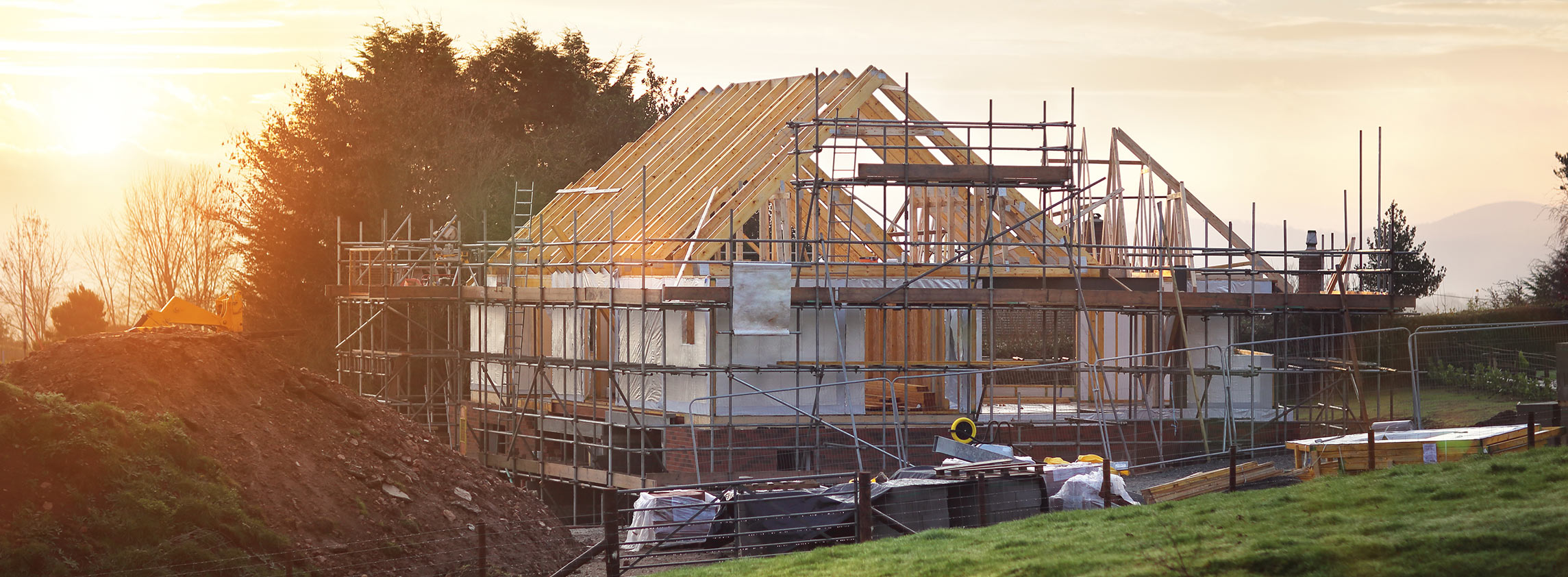Stock shortage boosts new build reservations
The new build market has seen sustained levels of high buyer demand into 2022. Even without the incentive of the stamp duty holiday, Savills regional new homes reservations were up 7% in Q1 2022 versus Q1 2021, and 41% up on pre-pandemic reservations in Q1 2019. A shortage of stock across the housing market, particularly for larger second hand properties, has prompted many buyers to consider new build.
Demand continues to outweigh supply. The RICS survey has reported positive buyer demand in each of the last eight months, while supply has been falling in 11 out of the past 12 months. As a result, stock remains 44% down on pre-pandemic levels, which leaves plenty of opportunity for new build supply to plug the gap.
But even with that opportunity, there are headwinds in the new build market that developers will need to tackle in order to meet continued demand. Particularly with Help to Buy ending (reservations must be made by 31st October 2022) how can developers remain competitive?
Challenges remain for the housebuilding market
New homes supply continues to be constrained by a lack of labour and materials shortages. Almost 90% of respondents to HBF’s survey in Q1 2022 considered materials availability as a major constraint, the strongest result ever recorded. The bottleneck in imports created by Covid restrictions has been replaced by the ongoing conflict in Ukraine, resulting in rapidly inflating build costs.
Domestic products are not any easier to obtain. Bricks, cement and roofing products have all become increasingly difficult to source as well as being more expensive to produce, due to the rising cost of energy. Not only is it increasingly costly for developers to build, but a fall in the number of consents granted since the peak of 2019 is creating intense competition for sites to build on. This is driving up land values with many smaller housebuilders being outbid by the major players.
Challenging build conditions threaten future housing delivery, and completions have been declining for the past three consecutive quarters, with only 238,500 new homes built in the year to Q1 2022. This is 7% down on the peak of over 255,000 at the same time in 2020. The South East is likely to see the greatest shortage of homes, particularly as nutrient neutrality issues further jeopardise land available for development.
New homes provide significant savings
The recent cost of living crisis has brought into sharp focus how much money households are spending on running their homes, as average gas and electricity prices jumped by 54% and 96% in April 2022 compared with a year ago. The typical energy bill is forecast to soar a further 32% when the cap is revised again in October.
As a result, buyers are becoming increasingly aware of the cost savings from living in a more energy-efficient home. 68% of respondents to our most recent buyer survey said that EPC ratings were important when deciding to purchase a home, with over a third of respondents stating they placed more importance on EPC ratings than they did a year ago.
New build stock is typically more energy efficient than second hand stock, owing to tightening sustainability standards. Between 2018-2020, the majority of new builds transacted achieved a ‘B’ on their EPCs, compared to a ‘D’ for a second hand detached, semi-detached or terraced property, and ‘C’ for a second hand flat.
Savills analysis calculates there to be an average 55% saving (equivalent to £983) on projected annual ‘core’ energy costs (lighting, heating and hot water) when purchasing new build over second hand. Semi-detached and terraced properties will have the greatest projected saving between second hand and new build stock, while the saving between flats is smaller, but still a healthy 37%. This means that following the additional increase in energy costs in October, new build will save the occupier c.£4,900 alone over the first five years of purchase, should energy prices remain high.
Regionally, new build homes in Wales have the greatest projected saving over second hand stock, with new build terraced homes saving over 63% on their bill compared with second hand. The energy efficiency of older homes tends to be poorer in Wales; 27% of second hand homes have an EPC rating of between A-C, compared with the 40% national average. The difficulty and expense associated with older stock makes new build a desirable choice for buyers looking to reduce their energy bills. A growing number of mainstream lenders are also starting to offer ‘green mortgages’, which provide preferential interest rates or cashback to energy-efficient homeowners, providing further potential savings.
How can developers take advantage of the move to green?
New build is already benefitting owners through reduced energy bills, but also has the added advantage of being more easily adaptable to emerging green technologies. The Future Homes Standard bans the installation of gas boilers in new build properties from 2025, instead using low-carbon heating alternatives such as heat pumps. Getting ahead of the curve could see the emergence of a ‘green premium’ for new build homes, with the majority (59%) of our surveyed applicants saying they would be willing to pay more if a property’s energy was powered by renewable sources.
Developers will also help support the increasing popularity of Plug-in vehicles (PiVs) by providing charging points within their developments. The number of PiVs newly registered in the UK increased by 77% between 2020 and 2021 and it is estimated that 80% of vehicles on the road will be electric by 2040.
In November 2021 the government announced that every new home with on-site parking is to have an electric vehicle charging point, helping to increase charge points by 145,000 each year. Developers who go beyond the minimum requirements are likely to better future-proof their developments and entice a larger pool of buyers who are increasingly motivated by cleaner and cheaper ways of living.
